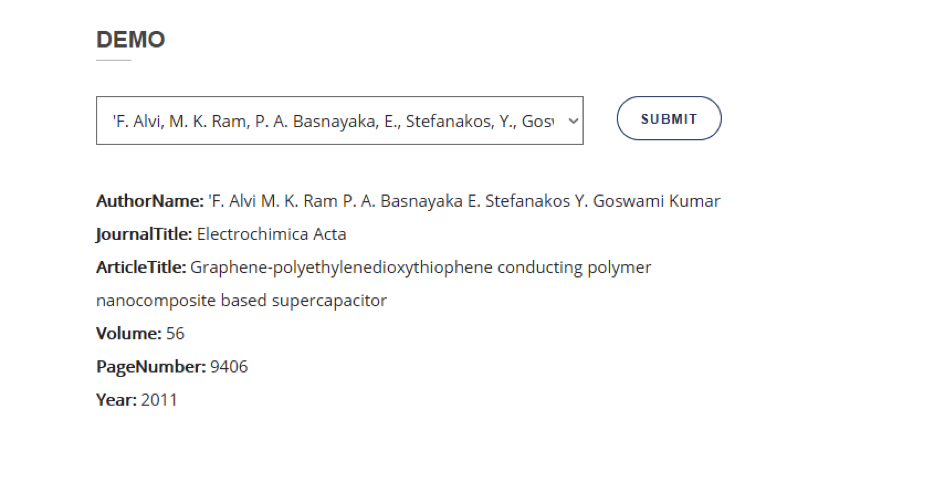How neural networks help in e-learning
We tell what neural networks are, how they work and help to study on the Internet. Bonus - a selection of useful blogs about neural networks in English.

Neural networks are computer processors modeled according to the type of nerve cells. Processors are connected to the system. Each processor works as a neuron: it receives information, performs calculations on it and sends it further. Neural networks are not programmed in the usual sense, but are self-taught: the programmer sets the task, gives examples of the solution, and the neural network itself searches for the right answers. Neural networks store and reproduce information from memory. They can recognize, classify and summarize information.
Attempts to create a neural network began in the 1930s and 40s. McCulloch and Pitts worked on the first prototypes. In the 1980s, networks appeared that could analyze data. In 2007, Hinton created a neural network that knew how to recognize faces - now this function is on all cameras.
Now neural networks are used for different purposes: they select products according to preferences, help them navigate the map and process photos.
')
One of the areas where neural networks are not only learning, but also learning is e-learning. They are used in online translators, applications for learning a foreign language and are embedded in planings. For example, the Knewton project since 2008 helps students schedule their work using neural networks. And Google has integrated them into all translators since 2016.
We in Puzzle English also use machine learning, for example, to generate an individual Personal Plan for a user based on his needs and the learning history on the site.
Consider the three programs with neural networks and see how they help in learning.
Helps you find the information you need online. Searches in tweets, messages, headers from open access. It can analyze keywords, highlight categories and main idea with the help of textual similarity. Works with English, Spanish, Portuguese. There is a demo version.
Developers use the LSTM model to classify and search for text. She studies words, sentences, messages and forms the concept of "belonging" between elements according to specified criteria.

In the screenshot, the program shows the output from the e-book and the page number with the quote.
Records audio, decrypts, transforms sound into text. Translates online to 50 languages (English, Spanish, French, Russian and others).
Uses automatic translation technology and a neural network that recognizes languages by sound and generates translation.
The neural network in the translator works in two stages. The first is the formation of a word model and translation options based on context. The second stage is the translation of the word model into the desired language.

Online conversation and translation from Spanish to English via Skype. On the screen, Manuel Méndez, editor in charge of Gizmodo Español .
The platform is a personal account, you can add training courses to it, make up a schedule and monitor progress. Gooru uses a neural network to select courses: the program takes into account the interests and level of knowledge and shows the options.
The neural network in Gooru pulls up information from sections about the level of language, education, and goals. Then selects the appropriate options and offers TOP-10. If the user does not like the course, he removes it from the list. The neural network takes this into account and learns - the more courses you delete or confirm, the more accurate it works.

Personal account on Gooru.org. On the left are the training courses that the neural network recommends.
Neural networks help not only with studies, but also with space exploration. For example, using the application CRAYFIS , which searches for cosmic particles of ultra-high energy through the cameras of smartphones. With the help of neural networks, one can simulate the reactions of the human brain or determine the emotional state of a city .
Programs are getting a little smarter than we are used to. How it will change the process of learning and searching for information - we'll see in a couple of years.
How did neural networks appear? The story from Aristotle to Hinton - how the brain was studied, who invented artificial neural networks, how Hinton and the Ross company are connected.
Neural networks: search, classification, decoding and synthesis - briefly about what neural networks are for and where to use them. There are code samples.
Eight neural network architectures that you need to know - about the mechanics of neural networks and their functions in simple language. Bonus - links to github with the code of ready neural networks.
Machine learning, neural networks and algorithms - the basis of neural networks: terms, principles of operation and description of experiments.
Readers of the blog give a coupon for 500 rubles for the purchase of a subscription, which includes 8 types of training and weekly mailings about English grammar and vocabulary - "Vitaminki" and "Buns".
And for unlimited and perpetual access to all features of the site there is an “All Inclusive” tariff (the discount does not apply).

Neural networks are computer processors modeled according to the type of nerve cells. Processors are connected to the system. Each processor works as a neuron: it receives information, performs calculations on it and sends it further. Neural networks are not programmed in the usual sense, but are self-taught: the programmer sets the task, gives examples of the solution, and the neural network itself searches for the right answers. Neural networks store and reproduce information from memory. They can recognize, classify and summarize information.
Attempts to create a neural network began in the 1930s and 40s. McCulloch and Pitts worked on the first prototypes. In the 1980s, networks appeared that could analyze data. In 2007, Hinton created a neural network that knew how to recognize faces - now this function is on all cameras.
Now neural networks are used for different purposes: they select products according to preferences, help them navigate the map and process photos.
')
One of the areas where neural networks are not only learning, but also learning is e-learning. They are used in online translators, applications for learning a foreign language and are embedded in planings. For example, the Knewton project since 2008 helps students schedule their work using neural networks. And Google has integrated them into all translators since 2016.
We in Puzzle English also use machine learning, for example, to generate an individual Personal Plan for a user based on his needs and the learning history on the site.
Consider the three programs with neural networks and see how they help in learning.
Paralleldots Text Classifier
Helps you find the information you need online. Searches in tweets, messages, headers from open access. It can analyze keywords, highlight categories and main idea with the help of textual similarity. Works with English, Spanish, Portuguese. There is a demo version.
Developers use the LSTM model to classify and search for text. She studies words, sentences, messages and forms the concept of "belonging" between elements according to specified criteria.

In the screenshot, the program shows the output from the e-book and the page number with the quote.
Voice online translator in Skype
Records audio, decrypts, transforms sound into text. Translates online to 50 languages (English, Spanish, French, Russian and others).
Uses automatic translation technology and a neural network that recognizes languages by sound and generates translation.
The neural network in the translator works in two stages. The first is the formation of a word model and translation options based on context. The second stage is the translation of the word model into the desired language.

Online conversation and translation from Spanish to English via Skype. On the screen, Manuel Méndez, editor in charge of Gizmodo Español .
Gooru learning platform
The platform is a personal account, you can add training courses to it, make up a schedule and monitor progress. Gooru uses a neural network to select courses: the program takes into account the interests and level of knowledge and shows the options.
The neural network in Gooru pulls up information from sections about the level of language, education, and goals. Then selects the appropriate options and offers TOP-10. If the user does not like the course, he removes it from the list. The neural network takes this into account and learns - the more courses you delete or confirm, the more accurate it works.

Personal account on Gooru.org. On the left are the training courses that the neural network recommends.
Neural networks help not only with studies, but also with space exploration. For example, using the application CRAYFIS , which searches for cosmic particles of ultra-high energy through the cameras of smartphones. With the help of neural networks, one can simulate the reactions of the human brain or determine the emotional state of a city .
Programs are getting a little smarter than we are used to. How it will change the process of learning and searching for information - we'll see in a couple of years.
To understand what else neural networks can do, read our selection in English:
How did neural networks appear? The story from Aristotle to Hinton - how the brain was studied, who invented artificial neural networks, how Hinton and the Ross company are connected.
Neural networks: search, classification, decoding and synthesis - briefly about what neural networks are for and where to use them. There are code samples.
Eight neural network architectures that you need to know - about the mechanics of neural networks and their functions in simple language. Bonus - links to github with the code of ready neural networks.
Machine learning, neural networks and algorithms - the basis of neural networks: terms, principles of operation and description of experiments.
For those who want to pump English
Readers of the blog give a coupon for 500 rubles for the purchase of a subscription, which includes 8 types of training and weekly mailings about English grammar and vocabulary - "Vitaminki" and "Buns".
And for unlimited and perpetual access to all features of the site there is an “All Inclusive” tariff (the discount does not apply).
Source: https://habr.com/ru/post/347252/
All Articles